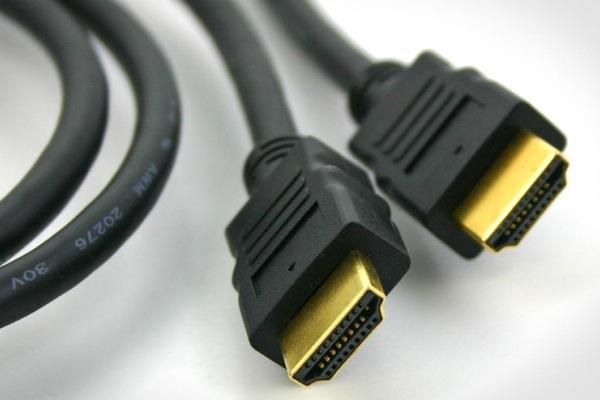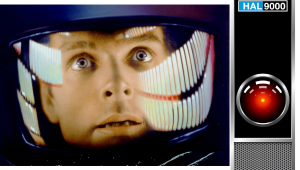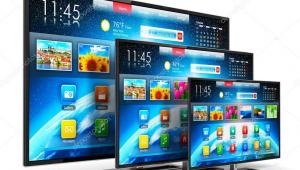Which HDMI Cable Do You REALLY Need?

HDMI is a nightmare. Sometimes it works. Sometimes it works but limits the information it transports from the source to the display. And sometimes it doesn’t work at all.
Take your pick, but the truth sits somewhere between these two statements. The elimination of the forest of wires is an undeniable plus. HDMI also enables new advances, including Ultra HD (UHD) with 4K resolution, wider and deeper color, and high dynamic range (HDR), that would have been difficult to implement given the connection options available to us in the pre-HDMI era.
But many of us have had HDMI issues. Yes, even reviewers have been bitten. Just days ago I connected the main HDMI output of my Samsung UHD Blu-ray player directly to the input of a 4K/UHD TV under review, and the player’s second HDMI output (dedicated to audio) to my Marantz pre-pro. This would allow me to listen to the set’s audio when I had no need to fire up the entire system (or when I needed to evaluate the set’s on-board audio), and also allow for the full outboard audio experience when desired. The resultno sound from the TV. To get it, I had to disconnect the HDMI cable from the secondary HDMI output of the player and then reconnect it when I wanted to listen to the external audio system.
Which Cable?
But there are other concerns as well. The most significant is deciding which HDMI cable to buy to insure that you’ll maximize your set’s potential. If your HDTV is plain vanilla 1080p at most, without any of the bells and whistles offered by UHD, almost any HDMI cable will do, though the length you choose might be significant. HDMI was originally designed for lengths of 5 meters (about 16 feet) or less. While some cables are rated for longer lengths, whether or not they’ll work for you isn’t always a certainty. In addition to the characteristics of the cable itself, the result can also be influenced by the characteristics of your source and display. Generally speaking, however, for most normal 1080p setups any good High Speed-rated cable, even one that’s modestly priced, should be fine. I use a 25-foot HDMI cable from Dayton Audio for a 1080p projection setup and have had no issues with itapart from its being stiffer and less flexible than I’d like.
Ah, yes, price. You’ll find HDMI cables that range from under $25 up to, literally, thousands. For 1080p there should be no difference between them in the quality of the picture the cheapest or priciest HDMI cable will produce, as long as they produce a picture at all. The main signs of a poor cable or poor connection are a missing (or intermittent) picture, or a picture with white spots (or sparkles) on the screen. But these problems should be visually obvious, and the simplest solution is to try a different HDMI cable, or even a shorter one of the same type.
The same cable pricing considerations hold true for 4K/UHD as well. When all is said and done, what you should look for first is a cable rated for a bandwidth of 18Gbps. This should carry all of the information in any UHD source4K resolution, wider and deeper color, and HDR.
About that "a" in HDMI 2.0a
For an HDR source using the HDR10 format (currently the most widespread HDR format, and the only one on UHD Blu-ray at present), your display must have at least one 2.0a HDMI input. The “a” is important. HDMI 2.0 will do everything HDMI 2.0a does for 4K/UHD, except for HDR10. And as I write this, HDR10 is the only HDR format likely to be sent through an HDMI cable to a UHDTV. Dolby Vision (the second most prominent format scratching for position in the home HDR race) will typically arrive at your set either wirelessly or via Ethernet streaming directly to the set, with no HDMI cables involved. But Dolby Vision sources might require HDMI if you’re using an external streaming box, or when we get at least some UHD Blu-ray titles in Dolby Vision, expected next year.
But even a cable rated for 18Gbps might not function properly if it’s too long. Sometimes you’ll find a cable that’s been tested at a shorter length for 18Gbps capability that won’t meet that capability at a longer lengtheven though it continues to be specified for 18Gbps. That’s why it pays to first try less expensive cables with this rating before biting the bullet and going pricier. It’s very likely that you’ll find an affordable HDMI cable that fits the bill before jumping upscale. If you use a vendor that offers a return guarantee, the potential hit on your charge card balance might be small. Amazon currently lists a 25-foot, 18Gbps cable for under $10, though I haven’t tried it!
"Certified" Cables
There are facilities that test HDMI cables for compliance with their stated bandwidth and other factors. But you won’t always see evidence of such testing in the cable maker’s literature or specs. I wouldn’t let that put me off from trying a modestly-priced cable that otherwise appears suitable, but I wouldn’t pay serious money for an HDMI cable that hasn’t been so certified, at least not without an iron-clad, money back guarantee.
Again, the magic number to look for is 18Gbps. Ignore claims such as “UHD-ready,” “4K,” or just simply “High Speed.” None of those designations gives you enough information. You’ll find any number of cables rated for “high speed,” sometimes specified at 10.2Gbps, that might work perfectly well at shorter lengths and in less demanding situations, but there’s no guarantee that they’ll work in your system, particularly if you’re watching HDR.
If the cable’s maximum bandwidth is listed at 600MHz rather than 18Gbps, that’s essentially the same thing. If it’s listed as 340MHz, that’s 10.2 Gbps. But you’re more likely to see cable bandwidth referred to as Gbps rather than MHz.
The Fiber Option
One way around some of these bandwidth/length issues is the use of fiber optics. They can work over extreme distances, and are ideal for that 50-seat home theater in your McMansion. While HDMI-to-fiber optic offerings are still limited, they’re available from a number of companies, including Tributaries and Celerity. They use regular HDMI connectors together with fiber optic cables and compact, HDMI-to-fiber optic (and vice versa) adapters. There are no bulky boxes to hide behind the equipment rack and display. While not cheap, they’re not outrageously priced eitherin Celerity’s case under $400 for 60-feet (varies with length).
It’s also true that the features promised by the UHD format (4K, advanced color, HDR) won’t always make it from the source to the display, even with perfect cables. The result will also depend on the capability of your 4K/UHDTV. When your set and source first get acquainted by exchanging metadata, the display tells the source how much of what the source offers it can handle. The source then sends just that information and no more. If the set can handle 4k, wide and deep color, and HDR, you’re good to go. But if it won’t accept one or more of those features, the source will only send the set what it can use. While any UHD set should be able to accept 4K, it’s possible that it won’t do some or all of UHD’s enhanced color, or HDR, or both. While limitations in the cable can contribute to these limitations, ultimately it’s the capability of your display that determines how much of the source material you’ll see.





























































